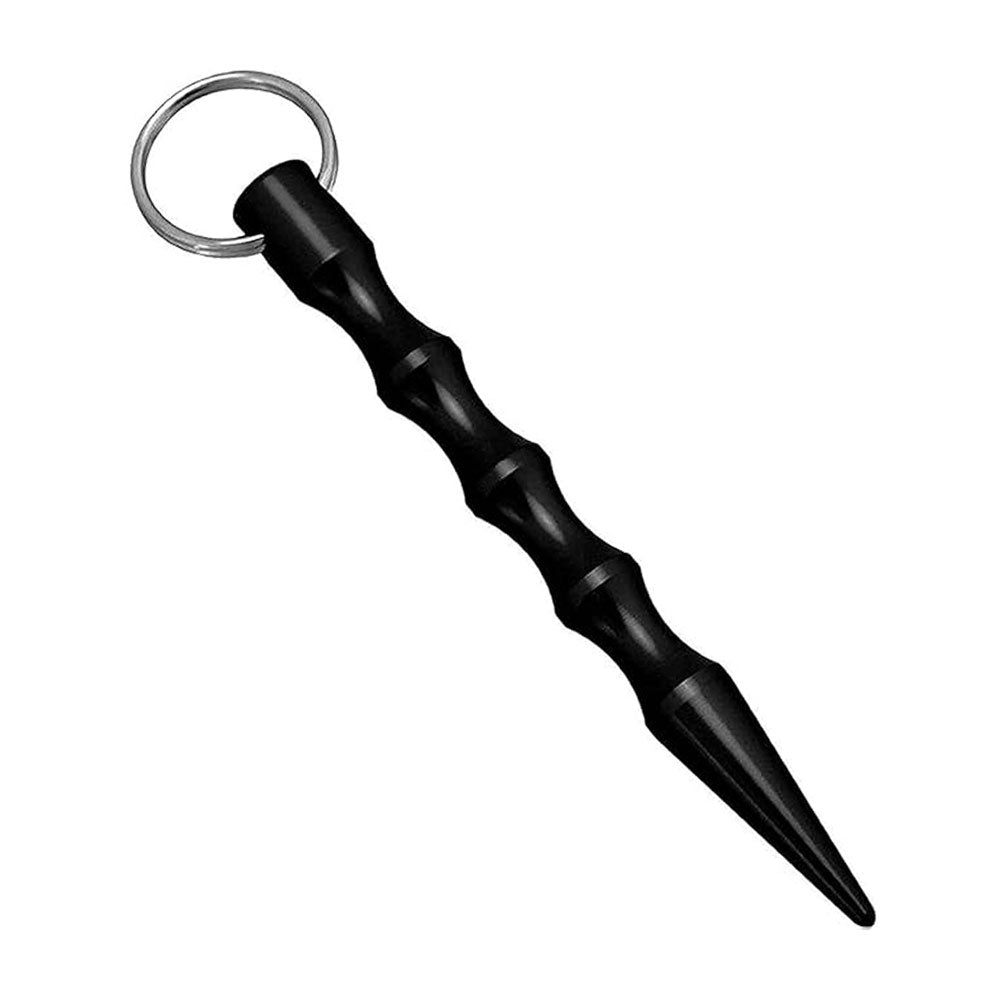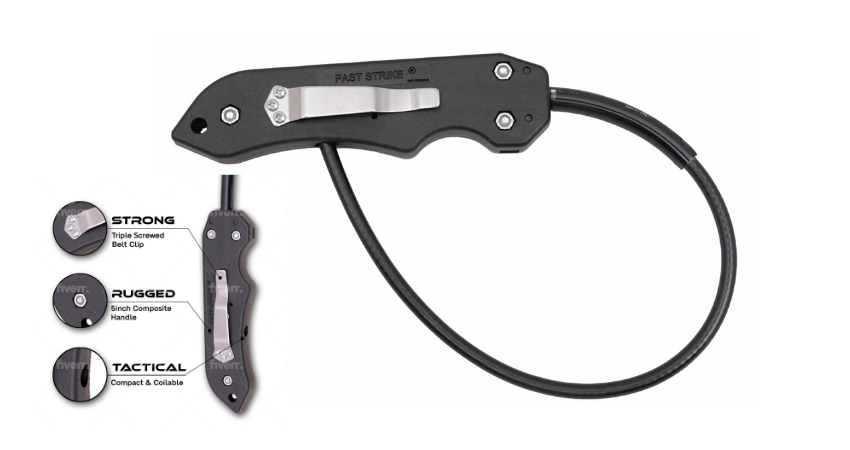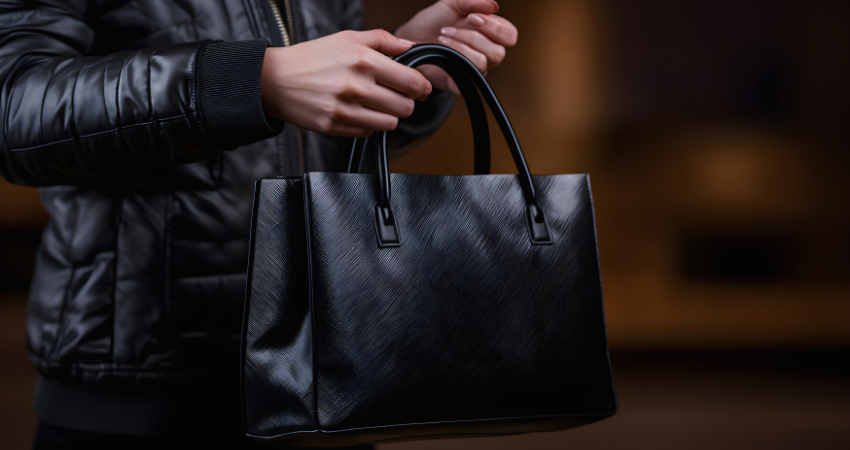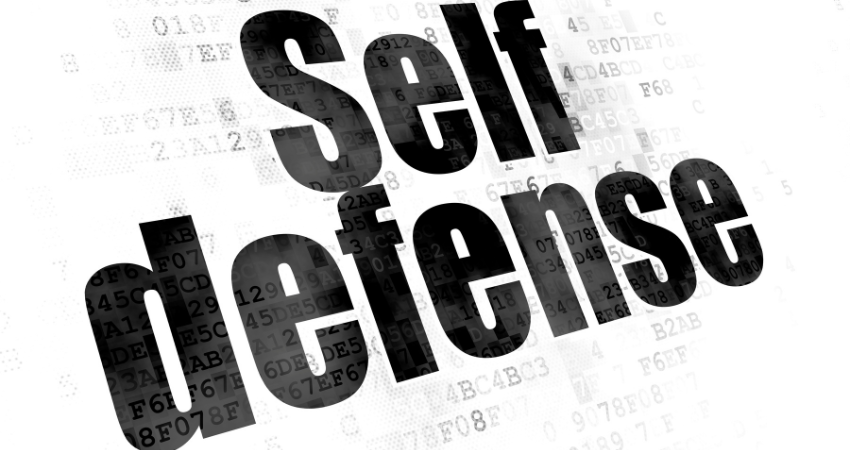
Did you know that Sergeant Dennis Tueller's drill showed how fast an attacker with a knife can reach you? It takes just 1.5 seconds from 21 feet away. This shows why learning self-defense that uses minimal force is key. We'll look at how to defend yourself without using too much force, including the legal and practical sides of it.
Defending yourself with minimal force is more than just physical moves. It's about being aware of your surroundings, knowing how to calm down situations, and understanding both hard and soft martial arts. By learning these, you can handle confrontations safely, protect yourself, and find peaceful solutions whenever you can.
Key Takeaways
- Understand the principles of hard and soft martial arts techniques for effective self-defense
- Learn how to apply the art of yielding and Tai Chi principles to diffuse confrontations
- Develop strategies for avoiding and de-escalating potentially dangerous situations
- Explore the legal aspects of self-defense to ensure your actions are justified and within the law
- Discover how to integrate minimal force techniques into your daily life for enhanced personal safety
Understanding the Principles of Hard and Soft Techniques
In martial arts, "hard" and "soft" techniques show how much force is used to counter an attack. Hard techniques meet force with force, like direct blocks or strikes. Soft techniques, on the other hand, deflect and redirect the attacker's momentum. This section will dive into the differences between hard and soft techniques, including force absorption and force redirection. We'll see how these concepts apply in self-defense.
Differentiating Hard and Soft Techniques
Hard techniques require more strength and meet force with force. For example, kickboxing low kicks aim to break an attacker's leg. Karate blocks also aim to stop or break the attacker's arm. These can be used in offense, defense, or counter-offense.
Soft techniques, however, deflect the attacker's force with minimal effort. They use circular mechanics and work when the attacker is off-balance. In Judo and Jujutsu, soft techniques like the Tomoe Nage throw are used when the attacker pushes towards the defender.
The Role of Force Absorption and Redirection
Soft techniques are circular and internal, using Qi (Chinese) or ki (Japanese and Korean). The principle of Jū in Bujutsu and Budō disciplines allows for controlling the enemy's blade or unbalancing them. This requires mental and physical flexibility to adapt to the adversary's actions.
| Technique | Description | Examples |
|---|---|---|
| Hard Techniques | Meeting force with force, requiring greater strength | Kickboxing low kicks, Karate blocks |
| Soft Techniques | Deflecting the attacker's force, relying on minimal strength | Tomoe Nage throw (Judo/Jujutsu) |
Traditional tai chi views hard/soft as external/internal, focusing on force use in striking. Hard styles use linear external force, while soft styles use circular internal force. This difference is also seen in various Chinese martial arts styles.
Tai Chi and the Art of Yielding
The ancient Chinese martial art of Tai Chi shows the power of Jū, or flexibility. It's at the heart of the "soft" way to defend oneself. Rooted in Taoist philosophy, Tai Chi teaches to yield to an opponent's force and turn it to your favor. It does this without relying on brute strength to overpower.
Embracing the Principle of Jū (Flexibility)
The idea of Jū, or pliancy, is key in Tai Chi. It lets practitioners adjust to changing situations and beat opponents with little effort. By staying centered, calm, and ready, Tai Chi students can absorb and deflect attacks. They use the opponent's momentum against them.
- Tai Chi improves physical balance and stability, reducing the risk of falls.
- Regular practice enhances flexibility and joint health through gentle movements.
- Learning Tai Chi can boost mental focus and calmness due to its meditative components.
Tai Chi teaches self-awareness, making you safer in many situations. Practicing push hands and sparring in Tai Chi sharpens your reaction times and defense skills. It's a great addition to any self-defense routine.
"Tai Chi not only enhances physical safety but also contributes to mental and emotional well-being."
Learning Taijiquan (Tai Chi Chuan) takes time, as it combines fighting skills with health benefits. But the effort is worth it. Tai Chi's efficient movements and energy control are useful in facing multiple attackers or stressful situations.
By embracing Jū, Tai Chi practitioners can handle self-defense with a calm, adaptable mindset. They use their opponent's force against them. This ancient art offers a complete approach to safety, blending physical, mental, and emotional well-being.
How to Defend Yourself with Minimal Force
When you face a confrontation, it's key to respond right and use the least force needed. Focus on situational awareness and risk avoidance. Also, learn de-escalation techniques and non-violent conflict resolution. This way, you can defend yourself without using too much force.
Situational Awareness and Risk Avoidance
Being aware of your surroundings is the first step in self-defense. Notice potential threats and avoid risky situations. This might mean:
- Scanning your environment for potential dangers
- Trusting your instincts when something feels off
- Avoiding isolated or poorly lit areas
- Keeping a safe distance from suspicious individuals
- Maintaining an upright, confident posture to deter potential aggressors
By being more aware and managing risks, you can often avoid confrontations.
De-escalation Strategies and Non-violent Conflict Resolution
If a confrontation happens, try to de-escalate the situation and solve it peacefully. Good de-escalation techniques include:
- Remaining calm and speaking in a collected, non-threatening manner
- Using open-ended questions to understand the other person's perspective
- Actively listening and validating their concerns
- Proposing mutually acceptable solutions or compromises
- Slowly backing away or creating distance if the situation continues to escalate
Using these strategies can often calm down tense situations without violence.
"The greatest victory is that which requires no battle." - Sun Tzu, The Art of War
Always try to avoid using force. If you must, use the least amount needed to defend yourself. By focusing on awareness, avoiding risks, de-escalation, and peaceful conflict resolution, you can protect yourself safely.
Legal Aspects of Self-Defense
Understanding the legal side of self-defense is key. The law sees self-defense as a basic right. But, it's not always easy to know if your actions are legal.
To act legally in self-defense, you must face an imminent threat. Your response must be proportional and reasonable. Some places, like Arkansas, Maine, and New York, require you to try to retreat first.
Self-defense can apply in many situations, like defending yourself or others. But, using self-defense wrongly can lead to serious legal trouble. This includes criminal charges and civil lawsuits.
| State | Self-Defense Law |
|---|---|
| California | Follows both "Stand Your Ground" and "Castle Doctrine" |
| Arkansas, Maine, Maryland, Massachusetts, Minnesota, New Jersey, New York, and Rhode Island | Have a "duty-to-retreat" law |
Your fear in a self-defense situation must be real and not just imagined. Physical evidence or video can help prove your actions were justified if you're charged.
"In self-defense cases, an 'eye for an eye' stance is not accepted by the court."
Knowing the legal side of self-defense is vital. It helps you stay within the law. By learning the laws and principles, you can defend yourself confidently.
The Role of Assertiveness Training
Self-defense is more than just physical moves. It also means having strong personal boundaries and confidence. Assertiveness training helps people stand up for themselves. This can make them less likely to face threats.
Assertiveness is about respecting everyone's space without being too pushy or shy. Leaders like Gandhi and Dr. Martin Luther King showed how to stand up for change without violence. But, learning to be assertive can sometimes lead to being too aggressive at first.
Assertiveness training teaches that everyone should be able to share their thoughts and feelings in a respectful way. It includes learning to make eye contact, stand tall, and speak clearly. These skills help people express themselves confidently.
Being assertive can help fight off anxiety and depression. It also makes relationships better and improves mental health. Confidence building and boundary setting are key. They help people assert their needs and feel safe.
"Assertiveness is crucial for relationship building across various life domains and for enhancing psychological wellbeing." - Gallo, 2012
Assertiveness training is great for more than just physical defense. It builds strong personal boundaries and confidence. This makes a big difference in keeping safe and feeling good mentally.
Martial Arts for Self-Protection
Some martial arts are great for self-defense because they use little force. Jiu-Jitsu and Aikido are two examples. They teach you how to use leverage, timing, and energy redirection to beat bigger, stronger foes.
Jiu-Jitsu: A Comprehensive Approach
Jiu-Jitsu is all about grappling, throwing, and submitting. It teaches you to use your opponent's strength against them. This way, you can defend yourself, even if you're smaller or weaker.
Its ground techniques, like chokeholds and joint locks, are perfect for when someone tries to overpower you.
Aikido: The Way of Harmonious Spirit
Aikido focuses on blending with your opponent's energy and turning it against them. It uses the attacker's own force to control or throw them. This approach is smooth and doesn't require a lot of strength or aggression.
Both Jiu-Jitsu and Aikido are great for self-defense. They teach you to use minimal force and redirect energy. This makes them excellent for protecting yourself without harming the attacker too much.
Minimal Force Application in Law Enforcement
Using the least amount of force is key in law enforcement, just like in self-defense. Police are trained to use verbal persuasion, physical restraint, and less-lethal weapons. This helps build trust in the community and respects human rights.
The International Association of Chiefs of Police defines use of force as the effort needed to make someone comply. But, there are no strict rules on when or how much force to use. Officers rely on their quick thinking to decide.
There are different levels of force, from verbal and physical restraint to lethal force. The amount of force used depends on the officer's training and experience. The goal is to control the situation while keeping everyone safe, using force only when necessary.
| Jurisdiction | Minimal Force Policies |
|---|---|
| Washington | Peace officers are required to use the least amount of physical force necessary to overcome resistance. |
| New Jersey | Imposed a prohibition against any use of physical force except as a last resort. |
But, the idea of using the least amount of force is complex. It's hard to follow because it's not always clear-cut. This makes it tricky to apply in real situations.
Law enforcement should use the minimum force needed in each situation. The principle of proportionality limits force based on the threat and the crime. The precautionary principle aims to avoid lethal force and save lives.
Personal Safety and Minimal Force in Daily Life
Keeping yourself safe doesn't mean using too much force. You can use minimal force in your daily life. This helps you feel confident and in control. By being aware of your surroundings and setting clear boundaries, you can stay safe without giving up your values.
Boundary Setting and Self-Confidence
Setting clear boundaries is key to personal safety. Learn to say no and stand up for yourself. This is important with coworkers, friends, and strangers. It boosts your self-worth and keeps you safe by showing you're confident.
- Identify your personal comfort zones and communicate them clearly
- Practice assertive body language and vocal tone to reinforce your boundaries
- Cultivate self-confidence through positive self-talk and affirmations
- Trust your instincts and don't hesitate to remove yourself from uncomfortable situations
Remember, your safety is the most important thing. With the right mindset and skills, you can stay safe and confident every day.
| Situation | Minimal Force Approach | Outcome |
|---|---|---|
| Unwanted Advances | Firm Verbal Boundary Setting | Deescalates Situation, Maintains Composure |
| Confrontational Neighbor | Calm, Measured Communication | Resolves Conflict, Preserves Relationship |
| Feeling Unsafe in Public | Situational Awareness, Avoidance | Proactively Manages Risk, Maintains Safety |
By following the principles of minimal force and boundary setting, you can feel more confident and safe. This lets you handle tough situations with grace and strength.
Integrating Minimal Force into Your Lifestyle
Learning minimal force self-defense is a journey, not a quick fix. It's about growing and empowering yourself every day. By making these principles part of your life, you get a better way to stay safe and feel good about yourself.
Practicing martial arts is a great way to learn minimal force techniques. Martial arts like Jiu-Jitsu and Aikido teach you how to defend yourself and avoid fights. They also help you become more aware of your surroundings and more confident in yourself.
You can also use minimal force in your daily life. Boundary setting and assertiveness training help you speak up and stay safe. Being clear and confident in your words can prevent problems and keep you safe.
Using minimal force is more than just fighting skills. It's about feeling strong and in control. By living this way, you become more confident and resilient, taking charge of your safety and well-being.
"Self-defense is not just about physical skills, but a way of living – a lifestyle that empowers you to navigate the world with greater awareness, confidence, and control."
Self-Defense: Minimal Force Techniques Conclusion
In this guide, we've covered the basics of minimal force self-defense. We've looked at the differences between hard and soft techniques. We've also explored the art of yielding and resolving conflicts without violence.
This journey has given you a flexible way to stay safe. It's about more than just fighting back. It's about being aware, assertive, and using minimal force in your daily life.
By learning these skills, you gain confidence and adaptability. You also learn to respect human life more. This is true in everyday situations and in tougher ones too.
Minimal force self-defense focuses on keeping everyone safe. It teaches you to redirect, absorb force, and use non-violence strategically. This way, you can handle safety challenges wisely, knowing the legal and ethical sides of self-defense.
This approach makes you a responsible and caring guardian of your safety and your community's. It's about being proactive and compassionate in protecting yourself and others.
Self-Defense: Minimal Force Techniques FAQs
What are the key differences between "hard" and "soft" self-defense techniques?
Hard techniques use force to meet force, like direct blocks or strikes. Soft techniques, on the other hand, focus on deflecting and redirecting the attacker's energy. The soft approach aims to overcome opponents with minimal effort by absorbing and redirecting their energy.
How does the ancient art of Tai Chi embody the principles of minimal force self-defense?
Tai Chi shows the power of flexibility, or Jū, in self-defense. It teaches to yield to an opponent's force and use it to your advantage. This concept of Jū helps adapt to changing situations.
What strategies can be used to defend oneself with minimal force?
To defend with minimal force, consider these strategies: - Stay aware of your surroundings and avoid trouble. - Use de-escalation techniques and non-violent methods to resolve conflicts. - Set clear boundaries and be assertive to deter threats.
What are the legal considerations when it comes to self-defense using minimal force?
Self-defense actions are reviewed by the law. It's crucial to understand the rules of proportionality and when force is justified. Knowing the legal aspects ensures your self-defense actions are seen as lawful and justified.
How can martial arts like Jiu-Jitsu and Aikido be applied in self-defense situations?
Jiu-Jitsu and Aikido focus on using minimal force. They teach how to defeat stronger opponents by using leverage, timing, and redirecting energy. These martial arts are great for self-defense because they are adaptable and focus on de-escalation.
How can the principles of minimal force be applied in everyday life to maintain personal safety?
To stay safe daily, build self-confidence and set clear boundaries. Stay alert to avoid danger. By living these principles, you can be more proactive and mindful about your safety.










